The Java programming language
(ε-faster than slow motion)
Type casting numbers
Last class we saw what happens if we do things like
Type casting numbers
We can force our program to treat a number as having a different type
(TYPE)variable_name
Forcing java to treat a double as an int
Forcing java to treat a int as an double
Visualizing conditional statements
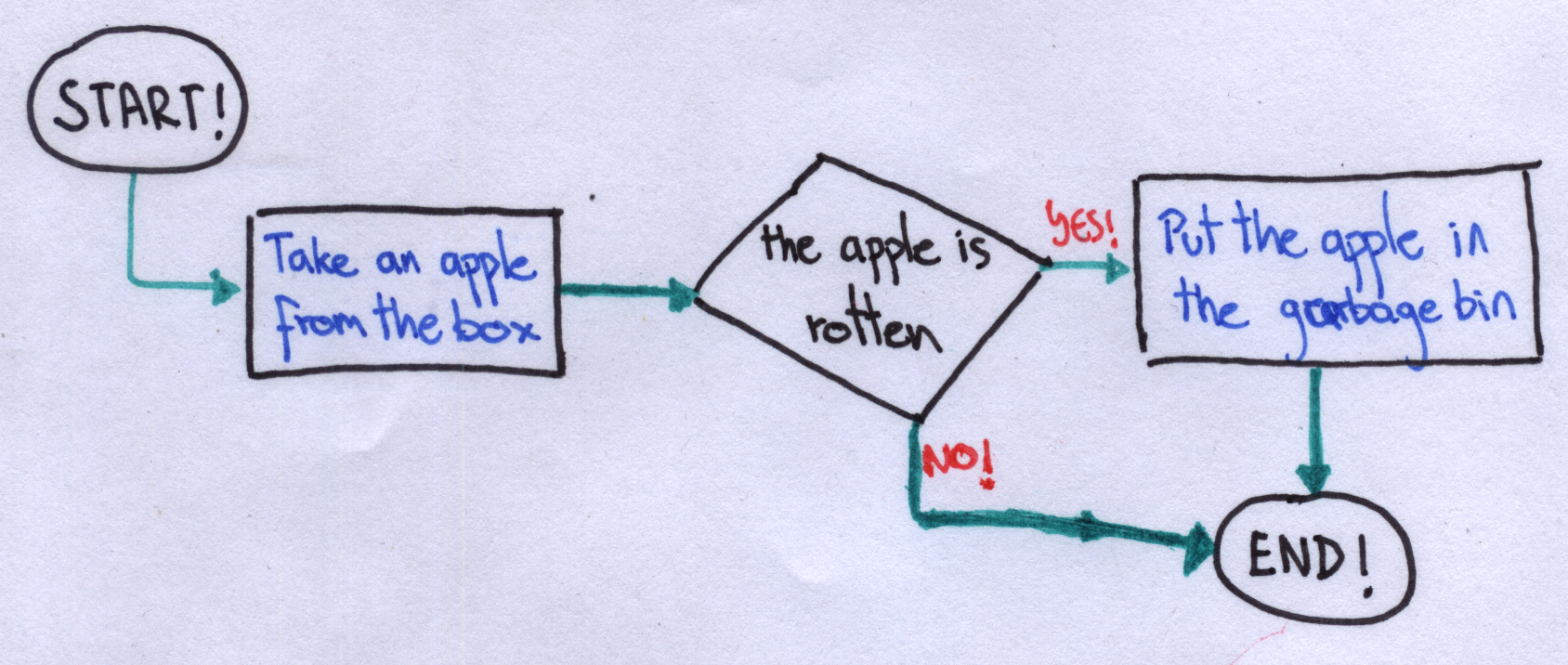
Visualizing conditional statements
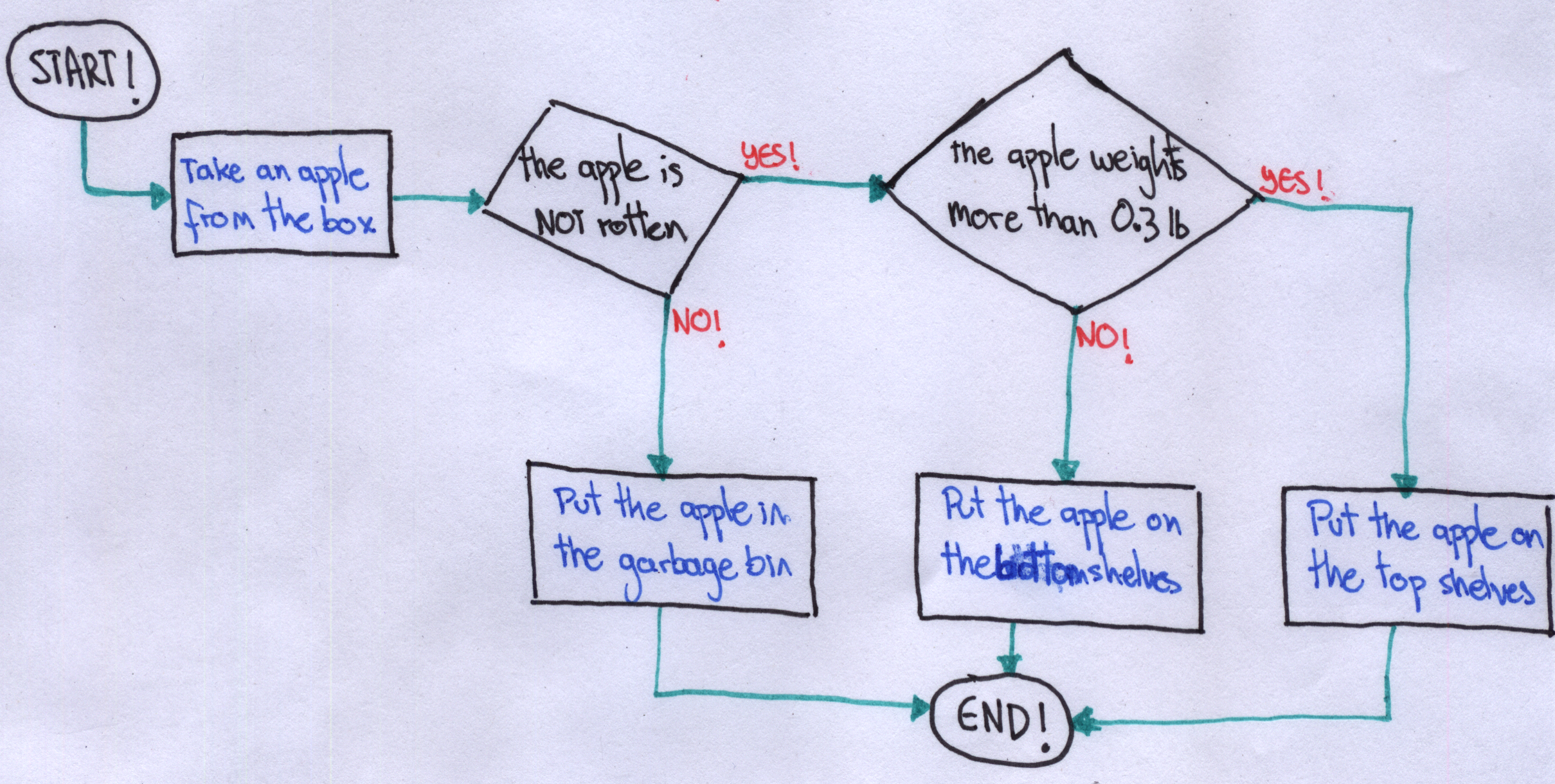
Loops and Arrays!
The while loop
while ( logical_expression )
do something;
-
The program will do something until the logical_expression is
false -
If the logical_expression is never
false, the program never stopsAn infinite loop
The while loop

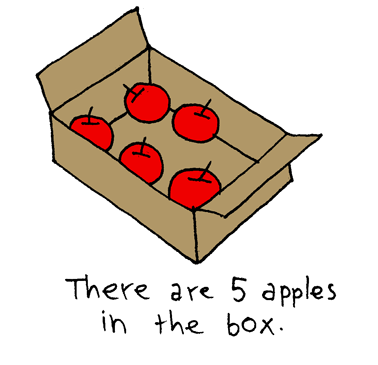
while ( there are apples left in the box )
do something;
The while loop


The while loop


while ( there are apples left in the box ){
if ( the apple is not rotten )
then it goes in one of the shelves;
else
then it goes in the garbage bin;
}
The while loop


Visualizing the while loop

Do you think you understand?
Write a program that prints the numbers from 1 to 100.
Then change it so that:
- for multiples of 3 it prints “Fizz” instead of the number
- for multiples of 5 it prints “Buzz”
- for numbers which are multiples of both 3 and 5 it prints “FizzBuzz”
Hint: Think of integer division.
See the story behind this problem: http://imranontech.com/2007/01/24/using-fizzbuzz-to-find-developers-who-grok-coding/
Working with more data
Imagine we want to write a program that uses a calendar...
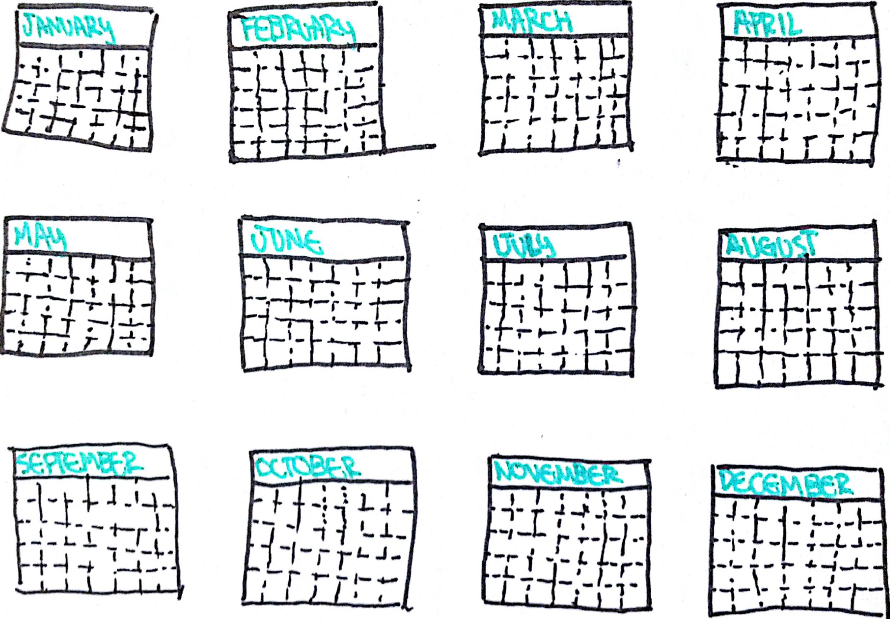

A friend wants to come visit Montreal
Your friend wants to come when the weather is nice
We will use a computer program to help us decide the best time
Declaring variables for September

Declaring variables for January

Declaring variable for months

This is becoming VERY ineffective!
Arrays
Arrays provide a way of holding more than one value with the same variable name
The values in the arrays are of the same type
Visualizing Arrays

Visualizing Arrays

Visualizing Arrays

Declaring Arrays
If we know the size but not the content of the array
TYPE[] variable_name = new TYPE[N];
If we know the content of the array
TYPE[] variable_name = {VALUE_1,VALUE_2, ..., VALUE_N};
Breaking down the declaration of an Array - 1
int: the type of the array
[]: this variable is an array
days_per_month: the variable name
{31,28,31,30,31,30,31,31,30 31,30,31}: The content of the array

Breaking down the declaration of an Array - 2
int: the type of the array
[]: this variable is an array
days_per_month: the variable name
new int: Allocating memory on the computer for this array
[12]: The length of the array (number of elements)

Accessing Arrays

Processing data using Arrays
The usual way of using arrays is to do something for every element in the array
- Example 1: Print every element
- Example 2: Compare each element to something ( minimum, maximum, higher/lower than some value )
- Example 3: Accumulate each element somewhere ( sum, average )
Remember: positions in the array start at 0. The last element of an array with n elements is at position n-1
The for each loop
for (TYPE element_name: array_name ){
do something with element_name;
}
-
Read it in plain english as
foreach element in array_name, do something - On iteration number i, element_name will be equal to the element in the i-1 position in the array
- The loop will end after the last element inside the array has been processed
The for each loop
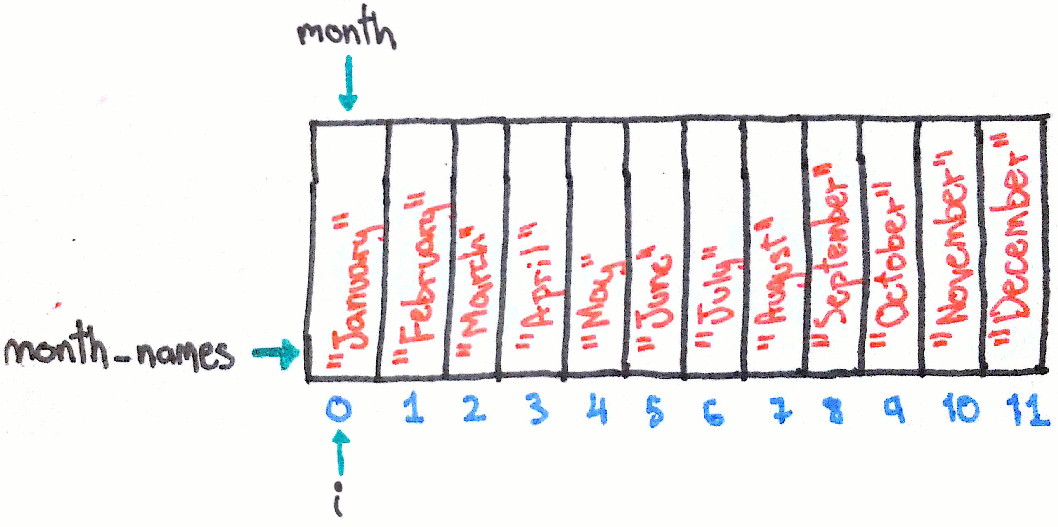
The indexed for loop
for (initialize_index; logical_expression; change_index_value){
do something;
}
initialize_index;
while ( logical_expression ){
do something;
change_index_value;
}
The indexed for loop

Try something by yourself
In the code for this class, the is a WeatherData.java file
The file Example6_Calendar.java shows how to use it, to get monthly temperature data
- Write a program that prints out the month with the coldest temperature
- Write a program that compares the temperature of 2 different years E.g which summer was warmer
- Write a program that compares the temperature of a particular year with the average of all history (from January 1942 till August 2014)
Using loops only:
- Write a program that computes the factorial of
n
Resources
- Review of types and conditionals:
http://docs.oracle.com/javase/tutorial/java/nutsandbolts/ - Arrays:
http://www.homeandlearn.co.uk/java/java_arrays.html - Loops:
http://www.homeandlearn.co.uk/java/java_for_loops.html - Suggested reading:
How to think like a Computer Scientist, Chapters 3.3, 7.2, and 12.1-12.5
/